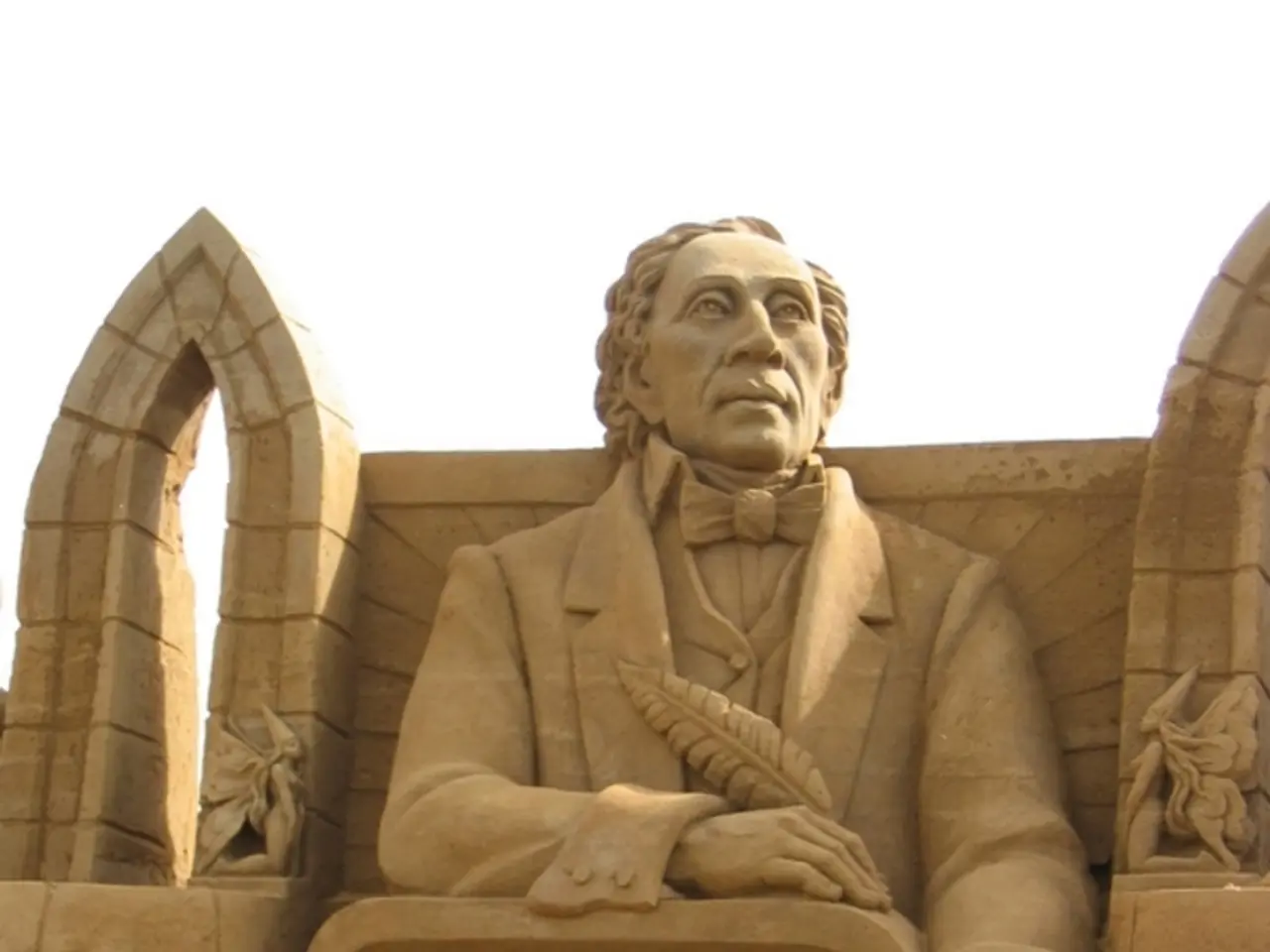Collection at Malkasten Düsseldorf: A Blend of Zero Pieces
In the heart of Düsseldorf, behind the historic Jacobi House and on the edge of a park, the Düsseldorf Art Association Malkasten has a new addition called "Forum." Here, visitors can immerse themselves in the thought-provoking exhibition, "World, Where to? ZERO and the Present."
This exhibition is a reflection on the Zero movement, a post-World War II avant-garde art movement founded in the late 1950s. Artists from Europe explored new forms, light, and kinetic art, aiming to shed the burden of the past, free the spirit, and counter the wild proliferation of images with a new, pure art.
Some of the highlights of the exhibition include Otto Piene's interactive "Sleepwalker" (1966), where a button press activates a light drawing on the wall. There's also Günther Uecker's "Sand Mill," which creates circular lines in the sand with string, and Heinz Mack's "Light Grid" (1964) on display in the large hall of the Malkasten Forum.
The sculpture court does not contain any Zero works; instead, it features Joscha Bender's AI-assisted "David" and Till Bödeker's digital room installation "Everything's Computer," which dominates with monitors and features digital experiences like chess and artificial waves.
Hal Busse's glowing painting (1959), Paul Van Hoeydonck's "Black Planet," Jan Henderikse's "Cork Relief" (1962), and Peter Royen's "Cross in the Field" (1984) are also part of the exhibition.
Visitors are encouraged to not dwell too much on the concept, but simply to let the works take effect. The title of the exhibition comes from a science fiction view of British historian Reginald Charles Churchill (1916-1986), although no direct connection has been found between Churchill, the Zero movement, and this specific exhibition at Malkasten.
The exhibition also includes new works by Christian Megert, such as "Mirror in the Square," and intriguing pieces like Felicitas Rohden's "Lofted Shell" and "Lofted Shell Valves," made of Jesmonite and 3D printed ventil-like forms, respectively. Angelika J. Trojnarski's collages "Pyr I and II" play with fire, similar to the works of Otto Piene.
"World, Where to? ZERO and the Present" runs until September 14. It is open Tue. 5-9 pm, Thu.-Sun. 11 am-5 pm, and Wed. is closed. Admission is 4 Euro, free for members of the artists' association. Don't miss this unique opportunity to explore the past, present, and perhaps even a glimpse into the future of art.
This exhibition provides a profound insight into the post-WWII art movement, Zero, featuring works from artists like Otto Piene and Heinz Mack, immersing visitors in a blend of light, kinetic art, and new forms. Beyond the Zero movement, the show encompasses contemporary art pieces such as Christian Megert's "Mirror in the Square" and Angelika J. Trojnarski's "Pyr I and II," creating a captivating home-and-garden for art enthusiasts, inviting reflection on the past while hinting at future possibilities in lifestyle and artistic expressions.




